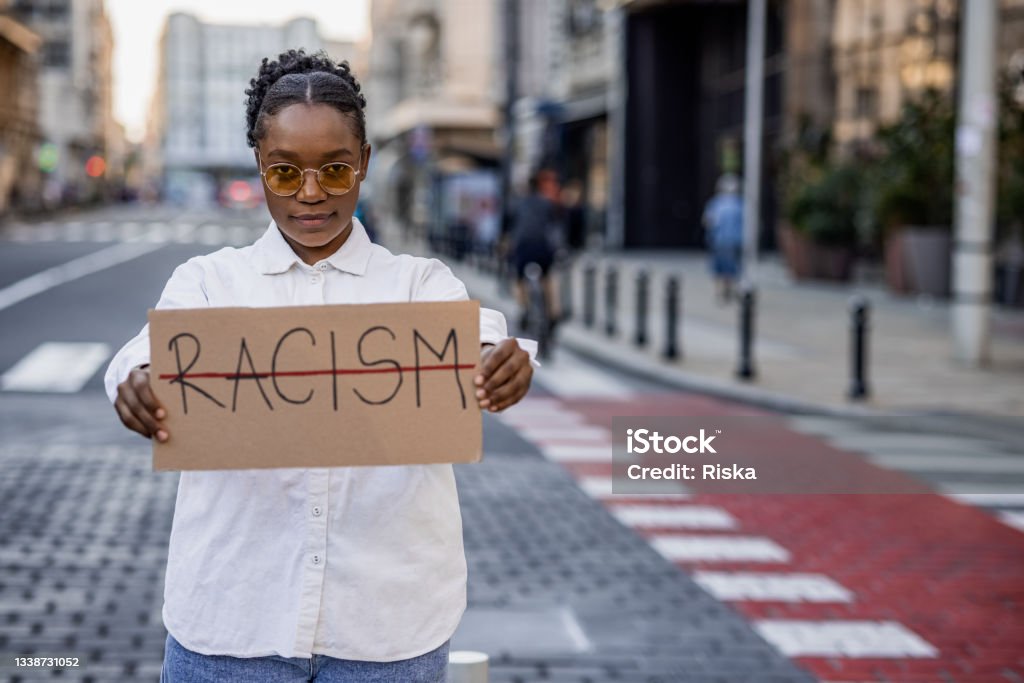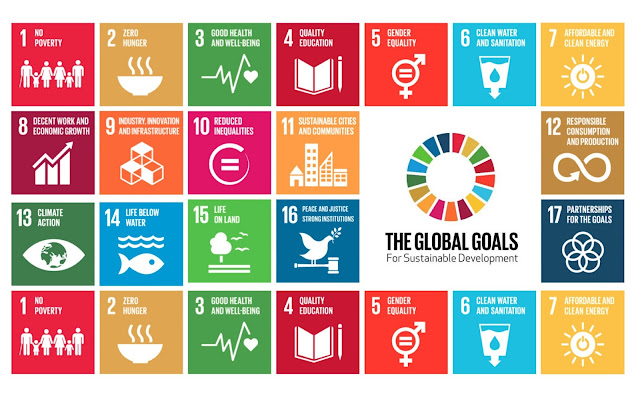Racial inequality, systemic racism, and the urgent need for police reform are pressing issues that continue to affect American society. These issues are deeply intertwined and profoundly affect individuals and communities of color. This comprehensive article will explore the multifaceted nature of racial disparities, the historical roots of systemic racism, the challenges faced by social justice movements, and the critical path forward.
A Harsh Reality: Ethnic Diversity in America
The statistics reveal the distribution of the U.S. population by race and Hispanic origin in 2016, with projections for 2060. In 2016, approximately 17.79 percent of the U.S. population identified as Hispanic.
The United States has long been characterized by its rich racial and ethnic diversity, with the population of various ethnic groups steadily increasing over the past decade. To illustrate, the count of Black or African Americans in the U.S. grew from 35.81 million in 2000 to 43.5 million in 2017.
Economic Disparities
In terms of economic disparities, it’s noteworthy that in 2017, the median annual family income for Black families in the United States was around $50,870, while the average family income for the Asian population stood at approximately $92,784. This marked a notable difference, with the income for Asians being more than $15,000 higher than the U.S. average family income of $75,938.
Moreover, there are disparities in unemployment rates based on ethnicity. In 2018, around 6.5 percent of the Black or African American population in the United States were unemployed. In contrast, only three percent of the population with Asian origins experienced unemployment.
I. Racial Inequality
A. Income Disparities
Racial wage gaps persist across various industries and occupations, with people of color earning less than their white counterparts. Data from the U.S. Bureau of Labor Statistics reveals stark disparities in median earnings based on race. Factors contributing to income disparities, such as unequal educational opportunities and discriminatory hiring practices, demand careful examination.
According to a report by the Economic Policy Institute in August 2023, there was a slight increase in unemployment rates across various demographic groups compared to the previous quarter. However, the overall labour market maintained its strength. Notably, the unemployment ratio between Black and white individuals remained at 2.0-to-1, and between Hispanic and white individuals, the ratio was 1.5-to-1, consistent with historical patterns. With the labour market’s recovery slowing down, close attention is being paid to how the Federal Reserve’s interest rate policies will impact unemployment rates among these different groups.
B. Education Disparities
Access to quality education remains unequal, disproportionately affecting minority communities. National Center for Education Statistics data highlights disparities in school funding, teacher quality, and academic achievement. These educational disparities have long-term consequences on economic mobility and opportunities for minorities.
C. Healthcare Disparities
Racial disparities in healthcare access, treatment, and health outcomes persist. Data from the Centers for Disease Control and Prevention illustrates differences in mortality rates, chronic disease prevalence, and maternal health outcomes among racial groups. Addressing healthcare disparities requires comprehensive policy changes and improved access to care for marginalized communities.
D. Criminal Justice Disparities
Racial disparities invade every stage of the criminal justice system, from arrests and sentencing to detention rates. Data from the Bureau of Justice Statistics reveals the disproportionate impact on communities of colour. The harsh consequences of mandatory minimum sentences and the school-to-prison pipeline continue to be a grave concern.
E. Housing Disparities
Historical practices such as segregation, redlining, and discriminatory lending have contributed to housing disparities. The examination of Home Mortgage Disclosure Act (HMDA) data reveals disparities in mortgage lending, while gentrification and the shortage of affordable housing exacerbate the issue.
II. Systemic Racism
A. Historical Roots
Understanding systemic racism requires acknowledging the historical context of slavery, Jim Crow laws, and other discriminatory practices. These injustices have left lasting scars on contemporary racial disparities.
B. Criminal Justice System
Systemic racism is prevalent within the criminal justice system, where racial profiling, biased policing, and over-policing of minority communities persist. Numerous studies and reports shed light on the deeply rooted issues within law enforcement agencies. Statistics on incarceration provide valuable insights into the inequalities within the criminal justice system. These disparities are particularly evident when considering racial and ethnic factors in both jails and prisons. As per the MacArthur Foundation’s Safety and Justice Challenge website, despite Black and Latinx individuals constituting 30% of the U.S. population, they represent a disproportionate 51% of the jail population.
C. Education System
Disparities in school discipline, special education placement, and access to advanced courses disproportionately affect students of colour. The school-to-prison pipeline, which funnels students into the criminal justice system, underscores systemic racism in education.
D. Employment Discrimination
Hiring biases and wage gaps persist, perpetuating economic disparities. Data from the Equal Employment Opportunity Commission (EEOC) highlights workplace discrimination complaints, while corporate diversity and inclusion efforts aim to address these challenges. On 5th October 2023, the Equal Employment Opportunity Commission (EEOC) filed a lawsuit against Tesla, accusing the automaker of permitting repeated and blatant acts of racism targeting Black employees at its factory in Fremont, California.
E. Healthcare Disparities
Implicit bias in healthcare affects diagnosis and treatment for minority patients. Structural barriers to healthcare access, such as lack of insurance and healthcare deserts, disproportionately impact communities of colour. Policy recommendations are essential to dismantle systemic racism in healthcare.
F. Housing Practices
Historical redlining continues to impact housing opportunities in minority communities. Gentrification and displacement further exacerbate housing disparities, while fair housing laws are essential for addressing systemic racism in this sector.
III. Police Reform
A. Use of Force
Analysis of police use of force incidents, including fatalities, highlights the need for reform. Body-worn camera footage plays a crucial role in accountability and calls for de-escalation training and policy changes are growing louder.
B. Racial Profiling
Data on racial profiling incidents during traffic stops underscores the problem of biased policing. Stop-and-frisk policies disproportionately target communities of colour, leading to legal challenges and calls for reform.
C. Police Accountability
Civilian oversight mechanisms are crucial for ensuring accountability within law enforcement agencies. The controversial concept of qualified immunity often limits accountability, while efforts to reform internal affairs investigations are underway.
D. Community Policing
Community-based policing strategies have shown promise in building trust between law enforcement and communities. Data on community policing outcomes suggest that these efforts can lead to more positive interactions.
E. Alternatives to Policing
Exploring non-law enforcement crisis response teams and diversion programs is critical to reducing reliance on traditional policing. Shifting resources from policing to social services can lead to more effective community support.
IV. Social Justice Movements
A. Black Lives Matter
The Black Lives Matter movement, born out of a need to address police violence and racial injustice, has gained widespread recognition. The movement’s origins, goals, and impact on protests, demonstrations, and policy changes are crucial aspects to explore. In a 2023 survey conducted by the Center, it was found that approximately 51% of adults in the United States expressed their backing for the Black Lives Matter movement. This support is comprised of 22% who strongly endorse it and 29% who hold a somewhat supportive stance. However, it also faces challenges and criticisms that need to be considered.
B. Civil Rights Movement
Understanding the contemporary struggles for racial equity requires acknowledging the historical civil rights movement of the 1960s. Key figures and accomplishments of the movement serve as a foundation for current activism. The Civil Rights Movement, spanning from the late 1940s to the late 1960s, marked a concerted and organized endeavour by Black Americans to eradicate racial discrimination and secure equal rights under the law. Despite occasional upheavals, this predominantly nonviolent movement led to the establishment of laws aimed at safeguarding the constitutional rights of all Americans, irrespective of their colour, race, gender, or national origin.
C. Contemporary Activism
Other social justice movements addressing racial equity, intersectionality, and the role of social media in contemporary activism are important aspects of the fight against systemic racism.
D. Impact on Policy
Social justice movements have influenced legislative changes and public awareness, shaping policy and advocacy organizations’ roles in advancing equity. Ongoing policy debates and future directions remain essential components of this discussion.
Systemic Racism Matters for Pakistani Students and Immigrants in the U.S.
For Pakistani students and immigrants, understanding these pressing American issues can be empowering. Not only does it provide practical knowledge for daily interactions and legal awareness, but it also strengthens their voice in advocating for inclusivity. Embracing this knowledge fosters resilience, respect, and a better understanding of the diverse society they are entering. But why is it especially relevant for Pakistani students and immigrants? Here’s why:
1. Cultural Adjustment
- Diverse Society: America has a multicultural society, and being aware of racial dynamics can help Pakistani students adapt better.
- Safety and Awareness: Understanding systemic issues can also help students navigate interactions with authorities or communities.
2. Workplace Realities
- Discrimination Knowledge: Awareness of discrimination can prepare Pakistani students for potential workplace challenges.
- Diversity and Inclusion Policies: Many U.S. workplaces value diversity and actively work against discrimination. Knowing this can help Pakistani students understand their rights.
3. Navigating Academic Spaces
- Campus Resources: U.S. campuses often provide support resources for minorities. Being aware of this can help Pakistani students find allies and support if needed.
- Broader Context: Understanding U.S. racial issues is part of the learning experience, especially in social sciences or humanities.
4. Empathy and Perspective
- Connecting with Others: Understanding the struggles of other communities fosters empathy and strengthens bonds with peers of diverse backgrounds.
- Advocacy: Pakistani students and immigrants can also advocate for fair treatment and inclusivity.
5. Immigration Policies and Law Enforcement
- Police Encounters: Racial profiling can affect immigrants. Knowing how to respond during encounters with law enforcement is essential.
- Visa and Green Card Applications: Understanding these issues might be beneficial during visa interviews, as U.S. consulates often assess applicants on cultural adaptability and awareness.
Conclusion
The persistent issues of racial inequality, systemic racism, and the urgent need for police reform demand our collective attention and action as a society. Social justice movements, including the influential Black Lives Matter movement, have played a pivotal role in raising awareness and advocating for change. By acknowledging the compelling data that underscores racial disparities, confronting deeply ingrained systemic racism, and pushing for comprehensive police reform, we take essential steps toward building a more equitable and just society.
Our journey towards racial equality is an ongoing and evolving process. While significant progress has been made, there is much work left to do. It is a commitment that requires unwavering determination and a sustained effort from individuals, communities, and institutions alike. Together, we can strive for a future where every person has an equal opportunity to thrive, regardless of race or ethnicity, and where justice and fairness prevail for all.
Understanding racial inequality, systemic racism, and police reform is important for anyone living or studying in America.
FAQs
Q1: What is systemic racism?
Systemic racism refers to the deeply ingrained and often subtle practices, policies, and structures within a society that perpetuate racial inequalities. It is a form of racism that is embedded in institutions and systems, leading to disparities in opportunities and outcomes for different racial groups.
Q2: How do economic disparities based on race manifest in the United States?
Economic disparities based on race are evident in factors such as income, wealth, employment, and access to quality education. For instance, in 2017, the median annual family income for Black families was significantly lower than that of Asian families.
Q3: What is the school-to-prison pipeline?
The school-to-prison pipeline is a term used to describe the phenomenon where students, primarily from minority backgrounds, are funneled from schools into the criminal justice system. It often involves harsh disciplinary measures in schools that disproportionately affect students of colour.
Q4: How do social justice movements like Black Lives Matter impact policy change?
Social justice movements like Black Lives Matter raise awareness of racial injustices and mobilize people to demand policy changes. They have influenced legislative reforms and pushed for greater police accountability.
Q5: What are some key aspects of the Civil Rights Movement in the United States?
The Civil Rights Movement, which took place from the late 1940s to the late 1960s, aimed to end racial discrimination and secure equal rights for Black Americans. Key figures like Martin Luther King Jr. and Rosa Parks, along with nonviolent protests and legal actions, played pivotal roles in achieving landmark civil rights legislation.
Q6: How does housing discrimination contribute to racial disparities?
Housing discrimination, historically through practices like redlining and discriminatory lending, has limited housing opportunities for minority communities. Gentrification and housing shortages further intensify disparities in housing.
Q7: What is the role of community-based policing in addressing systemic racism?
Community-based policing strategies aim to build trust between law enforcement and communities. They involve officers working closely with residents to address concerns, which can lead to more positive interactions and potentially reduce racial profiling.
Q8: What are alternatives to traditional policing?
Alternatives to traditional policing include non-law enforcement crisis response teams and diversion programs. Shifting resources from policing to social services can provide more effective support to communities.
Q9: How can individuals contribute to the fight against racial inequality and systemic racism?
Individuals can contribute by educating themselves about racial issues, supporting organizations working for racial justice, engaging in constructive dialogues, and advocating for policy changes that promote equality and equity.
Q10: Is progress being made in addressing racial inequality in the United States?
While some progress has been made, racial inequality and systemic racism persist in various aspects of society. Achieving lasting change requires sustained efforts from individuals, communities, and institutions.











Top News Sites for Geust Post
https://www.australiannewstoday.com
https://www.britishnewstoday.com
https://www.canadiannewstoday.com
https://www.europeannewstoday.com
https://www.neatherlandnewstoday.com
Regards